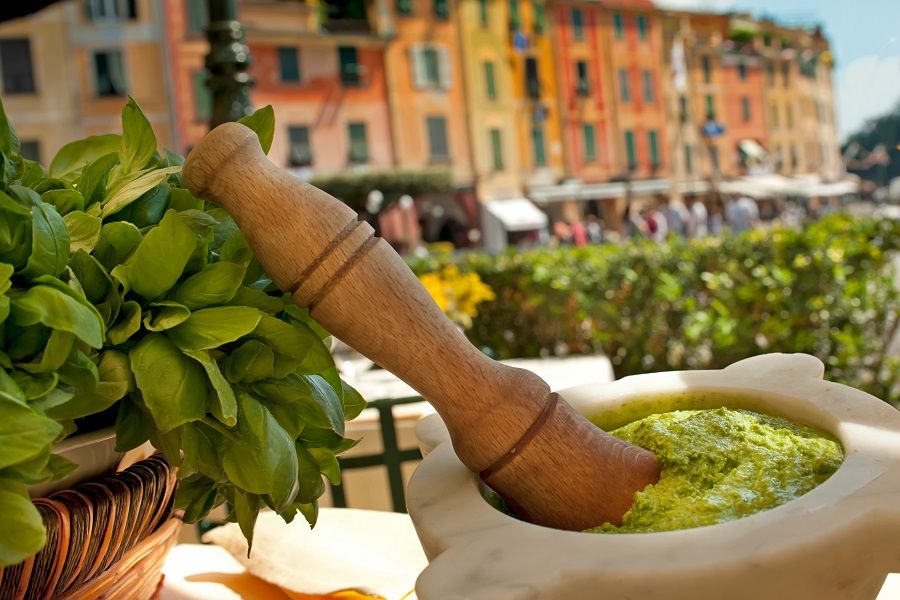Pesto

Info:
Difficulty: easy
Prep time: 30 minutes
Serving: 4
Cost: low
Allergeni:
Please check for allergens among the ingredients in the recipe
Few things capture the character, aroma, and flavour of a region as effectively as Pesto. In it, you can find the greenery of the Ligurian countryside, the scents of Genoa’s narrow streets, and the measured spirit of its people. What makes this sauce unique and difficult to replicate outside of Liguria is undoubtedly the basil. Basil (Ocimum basilicum L.) originates from Asia and tropical Africa and was introduced to Europe and Italy, where it does not grow wild.
The fragrance that characterises the leaves and flowers reaches its peak just before blooming, thanks to the richness of essential oils. These
volatile substances have antiseptic, antibiotic, and antiparasitic properties. The Genovese basil variety features medium-small, oval, convex leaves of a light green colour. Its aroma is delicate and lacks the minty scent found in other varieties. The essential oils are stored in small veins in the leaves; therefore, to achieve the best flavour, the pestle should be rotated gently to tear the fragrant leaves without crushing them. Pesto is perfect for dressing troffie, trofiette, trenette, and mandilli de saea, as well as enhancing menestrone.
Ingredients
The recipe for Pesto Genovese from the Consortium for the Protection of Genoese Basil D.O.P. for four people:
2 bunches of Genoese Basil DOP
1 clove of Vessalico Garlic DOP
1 tablespoon of italian pine nuts
3 tablespoons of grated Parmigiano Reggiano DOP
1 tablespoon of grated Fiore Sardo DOP
3 tablespoons of Riviera Ligure Extra Virgin Olive Oil DOP
A pinch of coarse salt
Preparation
Traditionally, Pesto Genovese is prepared using a marble mortar and a wooden pestle. The process should occur at room temperature and be completed as quickly as possible to prevent oxidation. Prepare the basil: wash the basil leaves in cold water and let them dry on a cloth without wrinkling them. Crush the garlic and pine nuts: In the mortar, crush one clove of garlic along with the pine nuts. Once they form a paste, add a few grains of salt. Add the basil: place the unpressed basil leaves into the cavity of the mortar and gently crush them using a rotating motion of the pestle against the sides. Repeat this process until the basil releases a bright green liquid. Incorporate the cheeses: Add the grated Parmigiano Reggiano and Fiore Sardo to the mixture. Add the olive oil: drizzle in the extra virgin olive oil Riviera Ligure DOP, which perfectly complements all the ingredients without overpowering them. Final touches: continue processing until you achieve a creamy consistency, completing the task as quickly as possible to avoid oxidation. Keep in mind that this is just one method; in Genoa and Liguria, everyone has their secrets, so you’ll never find two pestos that are exactly alike!



